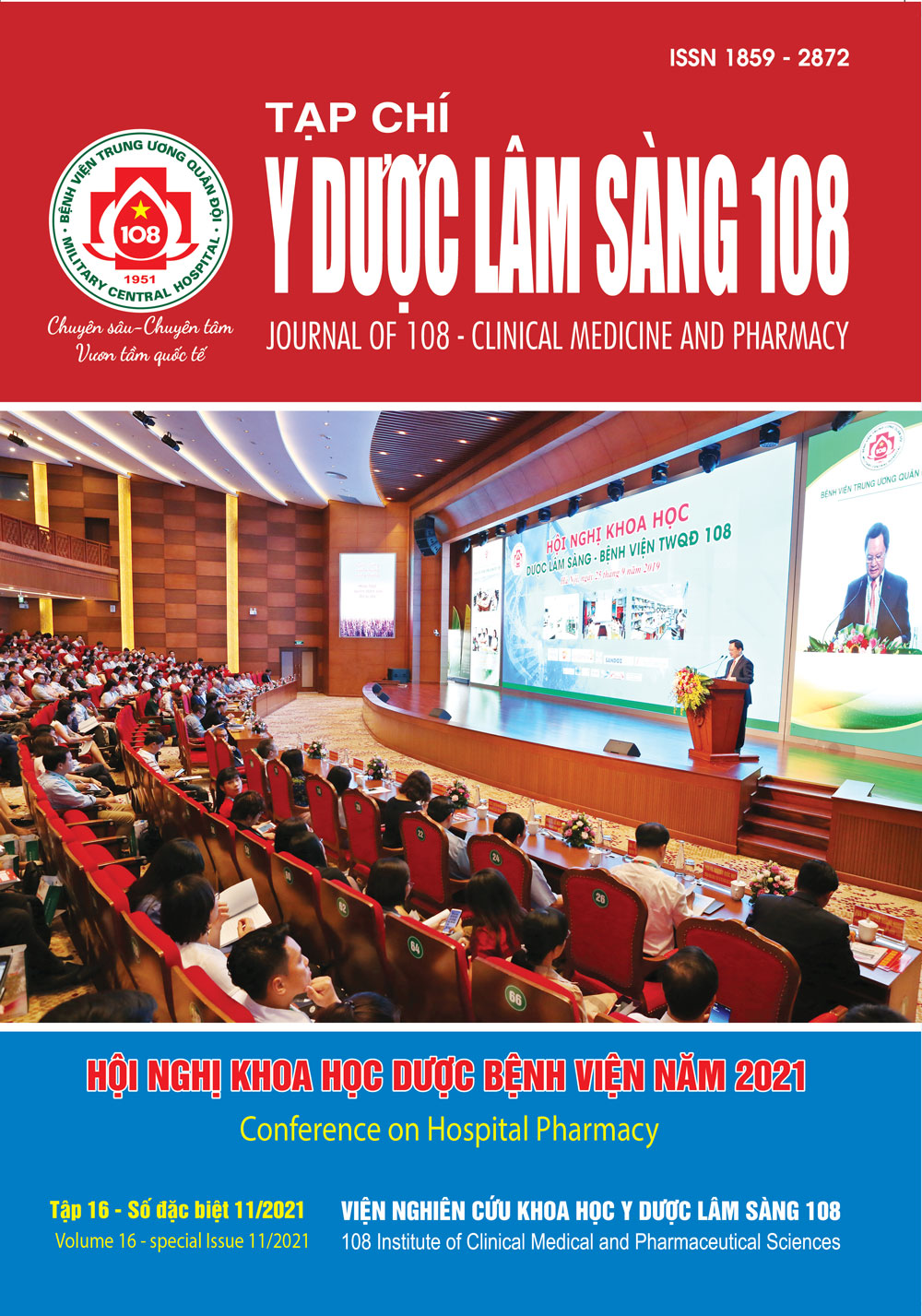Analysis of the acute kidney injury after use of iodine-based contrast in Departement of Cardiovascular Diagnostic and Intervention at 108 Military Central Hospital
Main Article Content
Keywords
Abstract
Objective: Analysis of the acute kidney injury after use of iodine-based contrast in Department of Cardiovascular Diagnostic and Intervention at 108 Military Central Hospital. Subject and method: In this study, we implemented a analytical cross-sectional descriptive study in all inpatients undergoing cardiovascular intervention at A2-C from April 1, 2021 to June 31, 2021 who complete creatinin testing before and after contrast administration. Result and conclusion: This studied cohort consisted of 100 inpatients, men make up majority (77%). The average age was 61.2 ± 16.4 years. 100% of patients use low-osmolar contrast media (LOMC), of which 83% were Iobitridol. Incidences of PC-AKI were 9% and that of acute kidney injury (stage 1 or risk stage) was 2% according to the AKIN or RIFLE criteria. Chronic kidney failure and myocardial infarction were two factors associated with the occurrence of PC-AKI.
Article Details
References
2. Nguyễn Phương Thúy (2017) Phản ứng có hại của thuốc cản quang chứa iod. Trung tâm DI & ADR.
3. European Society of Urogenital Radiology (2018) ESUR guidelines on contrast agents. Version 10.0, 17.
4. Gruberg L et al (2000) The prognostic implications of further renal function deterioration within 48 hours of interventional coronary procedures in patients with pre-existent chronic renal insufficiency. Journal of the American College of Cardiology 36(5): 1542-1548.
5. Kidney Disease Improving Global Outcomes (KDIGO 2012) Kidney International supplements. 2(1): 19-21.
6. Marenzi G et al (2004) Contrast-induced nephropathy in patients undergoing primary angioplasty for acute myocardial infarction. Journal of the American College of Cardiology 44(9): 1780-1785.
7. Seung Don Baek et al (2019) A risk scoring model to predict renal progression associated with postcontrast acute kidney injury in choric kidney patients. Medicine 98: 5.
8. Valete (2012) Incidence, morbidity, and mortality of contrast induced acute kidney injury in a surgical intensive care unit: A prospective cohort study. Journal of critical care 27: 1-5.
9. Yohei Kawatain et al (2016) Contrast medium induced nephropathy after endovascular stent graft placement: An examination of its prevalence and risk factors. Hindawi publising corporation radiology research and practice: 1-5.
 ISSN: 1859 - 2872
ISSN: 1859 - 2872
